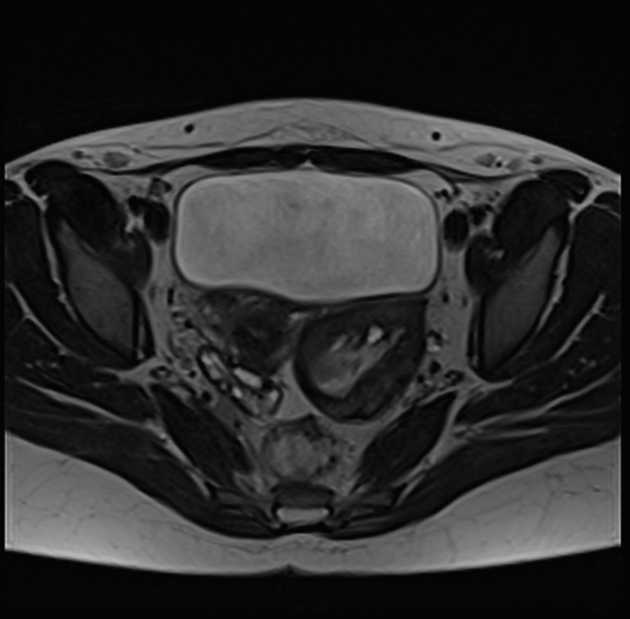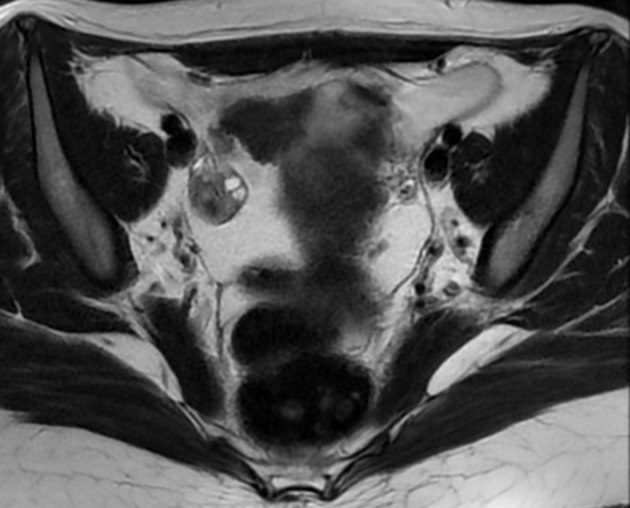Ruptured ovarian cysts are one of the most common causes of acute pelvic pain in premenopausal women. The sonographic appearance depends on whether a simple or hemorrhagic ovarian cyst ruptures, and whether the cyst has completely collapsed. The most important differential consideration is a ruptured ectopic pregnancy.
On this page:
Clinical presentation
Ruptured ovarian cysts and hemorrhagic ovarian cysts are the most common causes of acute pelvic pain in an afebrile, premenopausal woman presenting to the emergency room 1.
Cysts may rupture during pregnancy (if a very early pregnancy, this may cause diagnostic confusion with ectopic pregnancy).
Rebound tenderness from the pain is possible and the hemorrhage from a cyst can rarely be severe enough to cause shock 2.
Pathology
Although rupture of an ovarian follicle is a physiologic event (mittelschmerz (German for 'middle pain’)), the rupture of an ovarian cyst (>3 cm) may cause more dramatic clinical symptoms.
The pain from a ruptured ovarian cyst may come from stretching the capsule of the ovary, torquing of the ovarian pedicle, or leakage of cyst contents (serous fluid/blood) which can cause peritoneal irritation 2.
It is a common cause of physiological pelvic intraperitoneal fluid.
Radiographic features
Ultrasound
Ruptured ovarian cysts can have a variety of appearances depending on when the rupture took place, and whether the cyst is hemorrhagic or not. If a candidate is found, it should fulfill the criteria for a cyst:
- thin wall
- if hemorrhagic, clot may adhere to cyst wall mimicking a nodule but has no blood flow on Doppler imaging
- posterior acoustic enhancement
- maybe less noticeable if harmonics or compound imaging is used
- there should not be any internal blood flow
- circumferential blood flow in the cyst wall is possible
If a hemorrhagic cyst ruptures, then low-level echo hemoperitoneum maybe present in the pouch of Douglas, Morison's pouch, or in the left upper quadrant.
Treatment and prognosis
Treated conservatively in a premenopausal woman unless evidence of hypovolemic shock (tachycardia and postural drop in blood pressure).
A ruptured hemorrhagic cyst in a perimenopausal woman should be viewed more suspiciously and followed up appropriately. A hemorrhagic cyst or ruptured cyst in a postmenopausal woman deserves surgical evaluation.
Differential diagnosis
Differential considerations on ultrasound include:
- ectopic pregnancy: differentiate with a positive beta-hCG level
- hemoperitoneum or echogenic intraperitoneal free fluid from another etiology
- ruptured cystic ovarian tumor, with possible pseudomyxoma peritonei
- ruptured ovarian dermoid
















 Unable to process the form. Check for errors and try again.
Unable to process the form. Check for errors and try again.